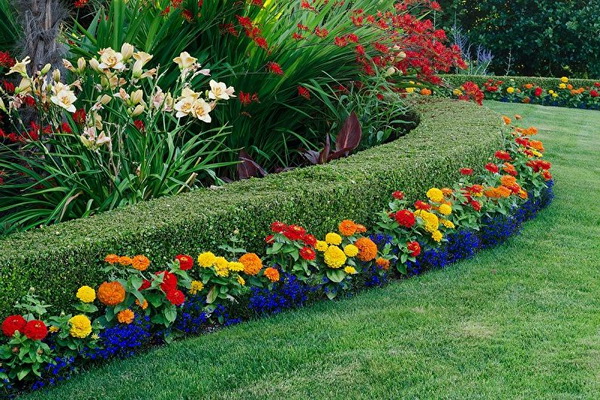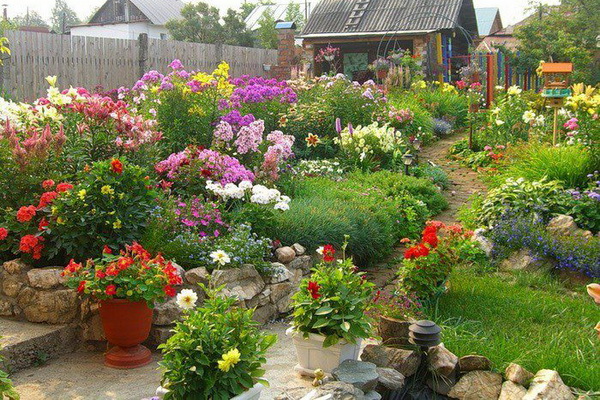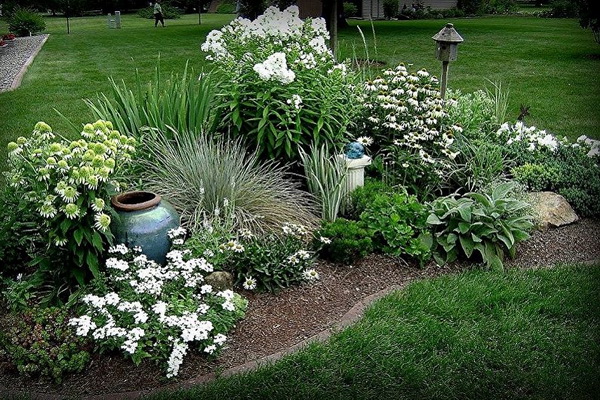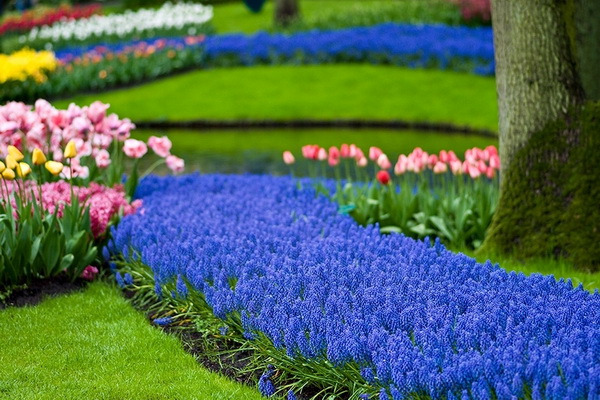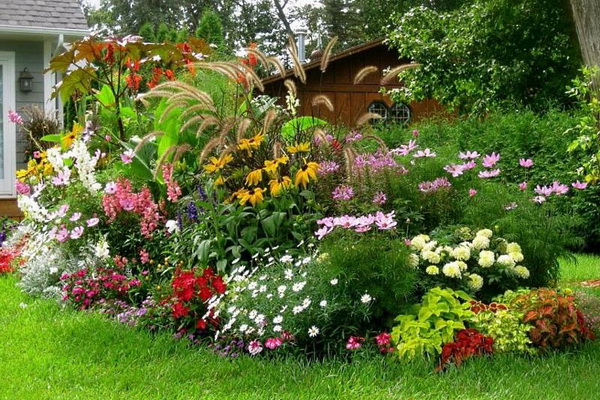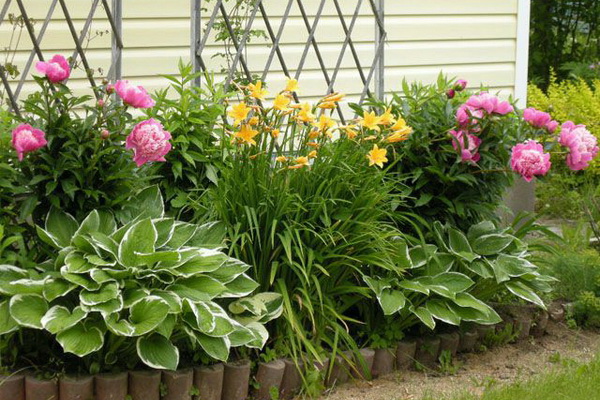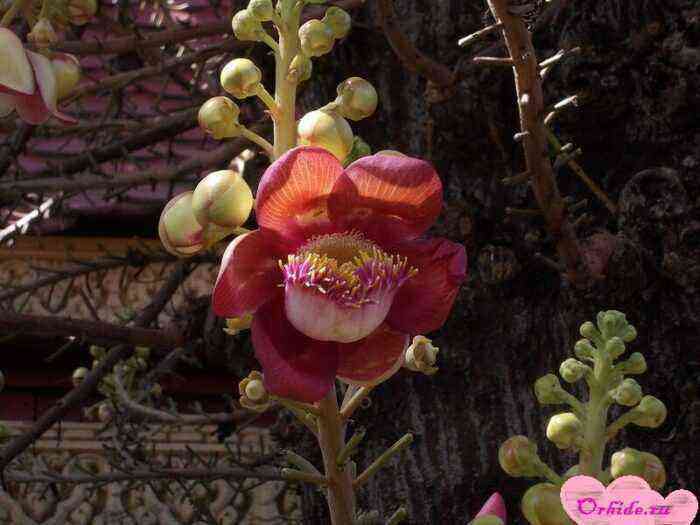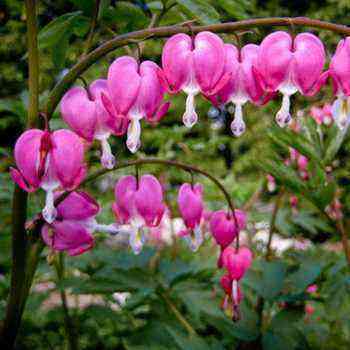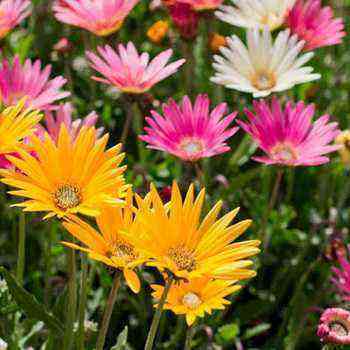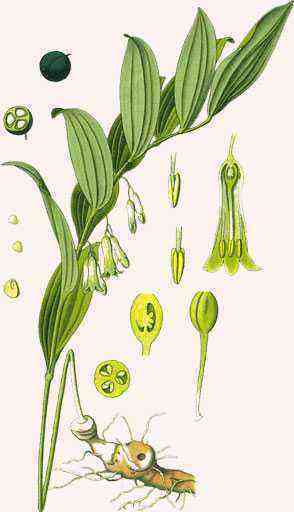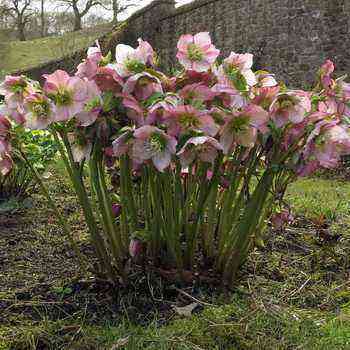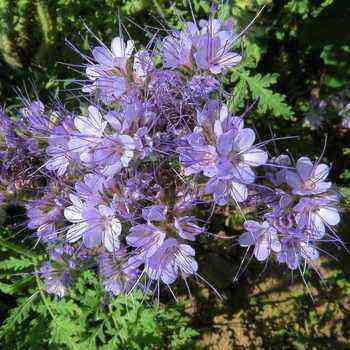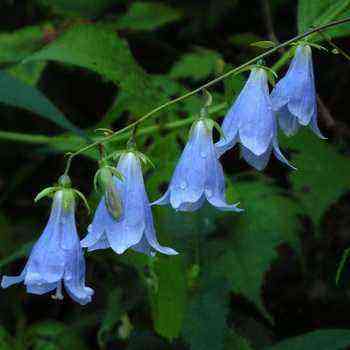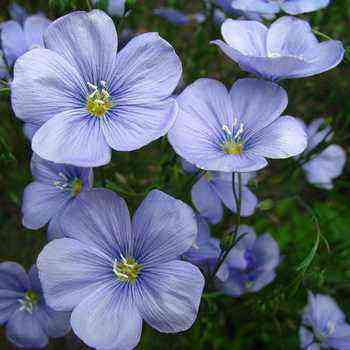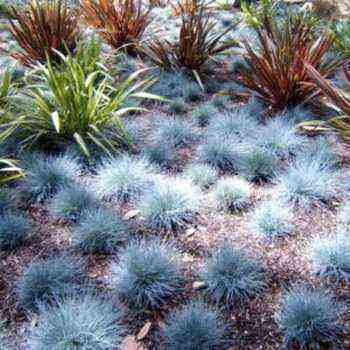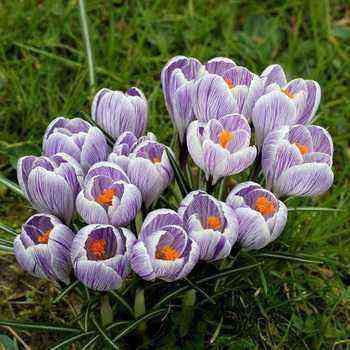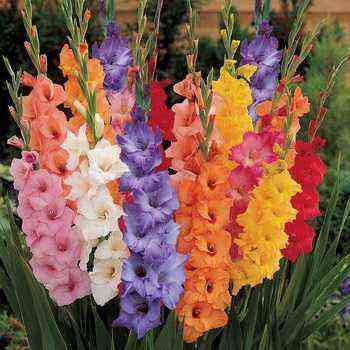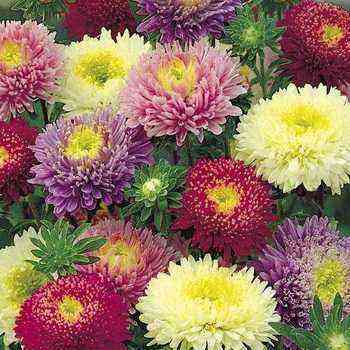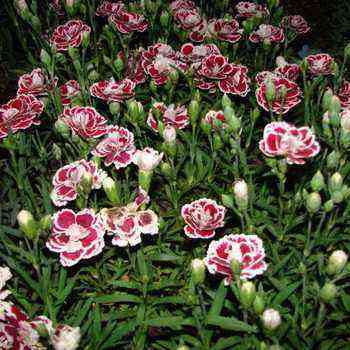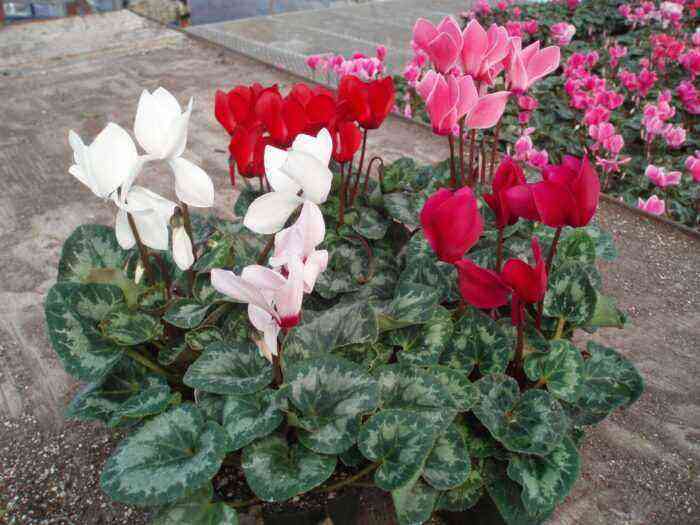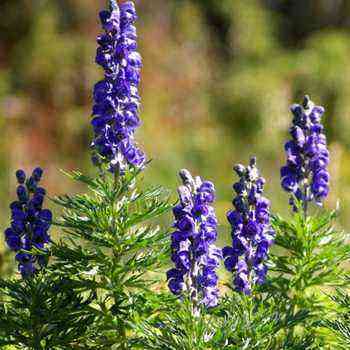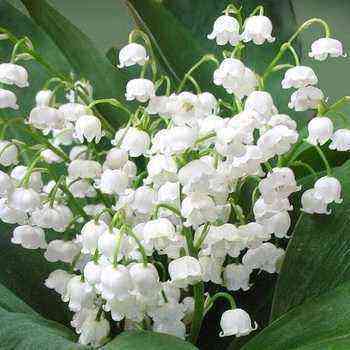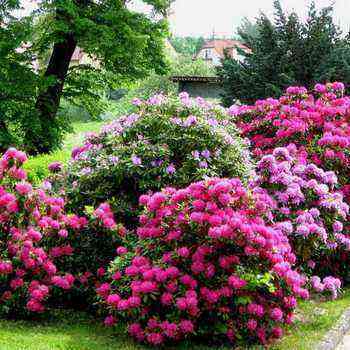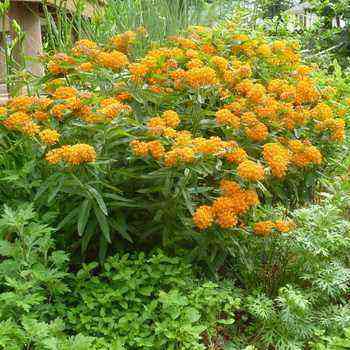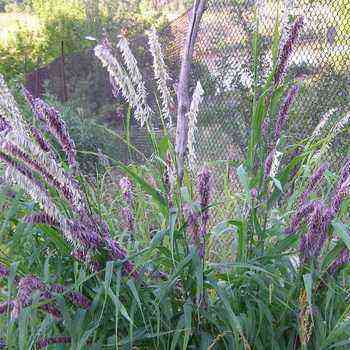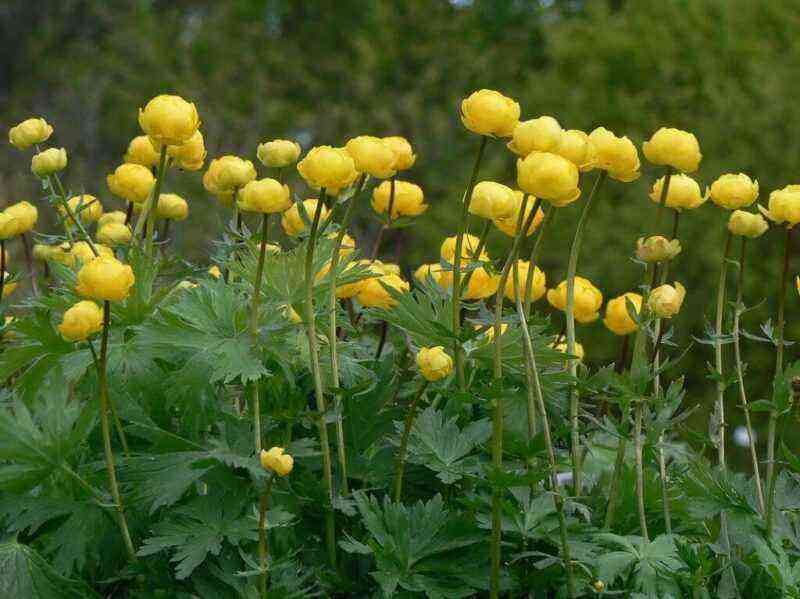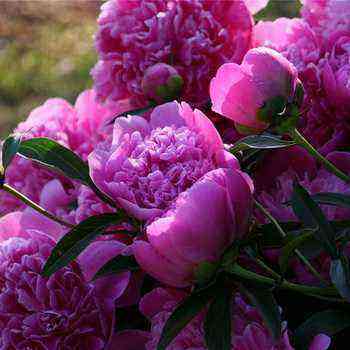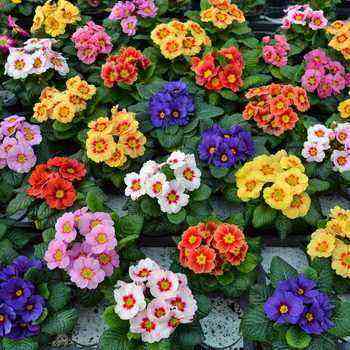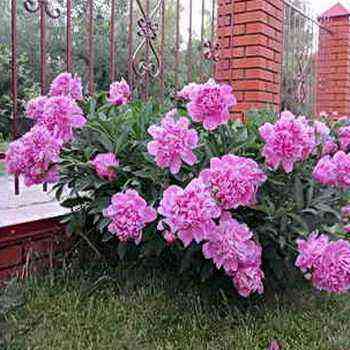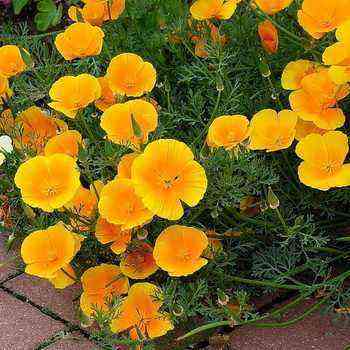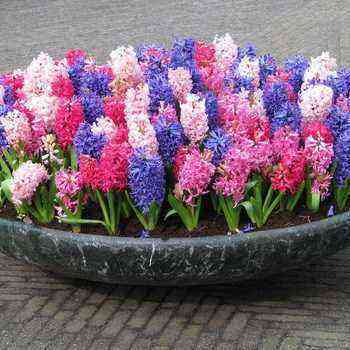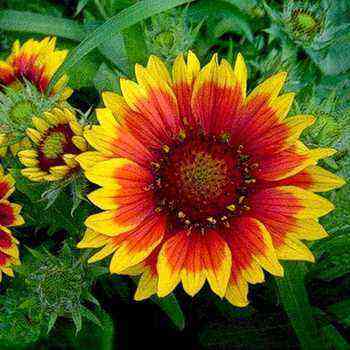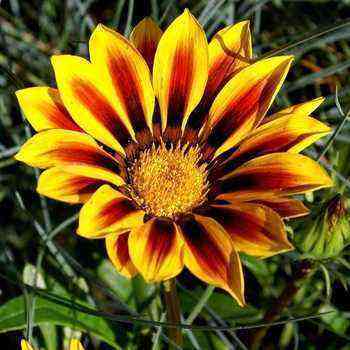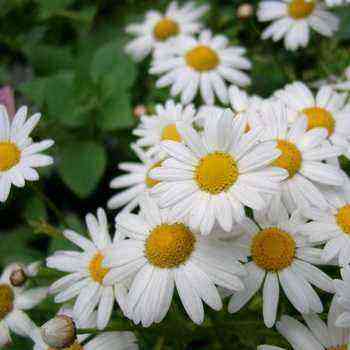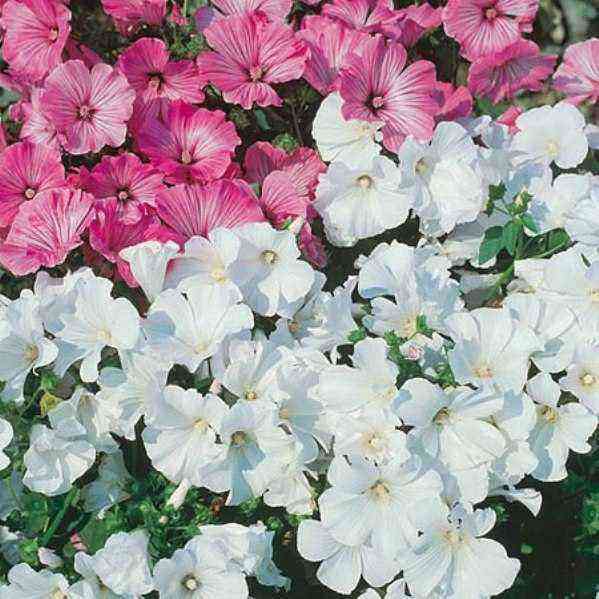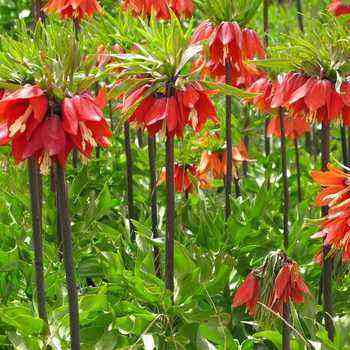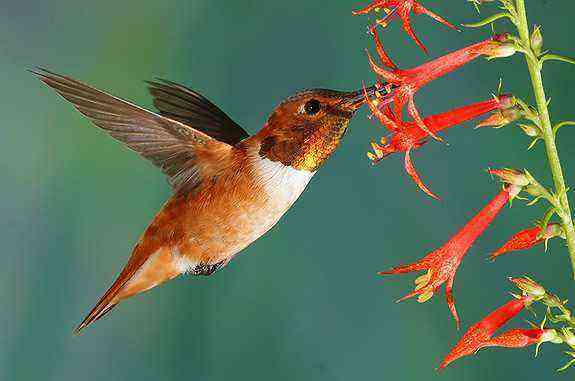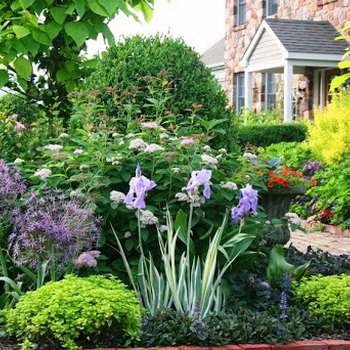
Perennials used for the design of flower beds and not only include herbaceous plants that are able to grow annually due to renewal buds wintering on rhizomes, in bulbs, corms and other underground organs. The main feature of perennial plants is that most of them hibernate in a leafless state, but some species go into hibernation with leaves (for example, styloid phlox, periwinkle, Bieberstein’s louse, etc.).
Groups of perennial plants
According to the height, perennial flower crops are usually divided into several groups.
One of the smallest groups is the so-called gigantic, or giant species:
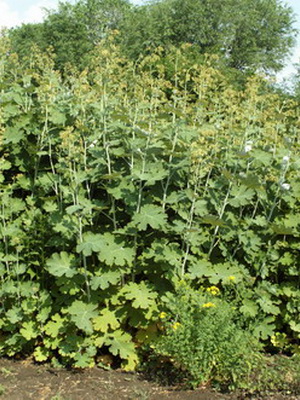
macklea heart-shaped
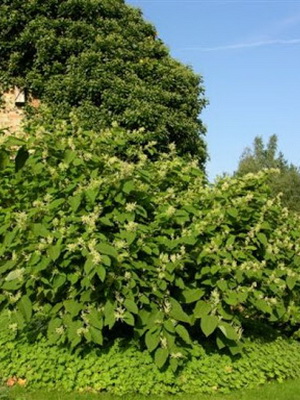
Highlander of sakhalin
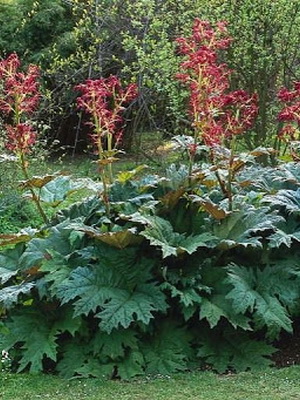
palm-shaped rhubarb
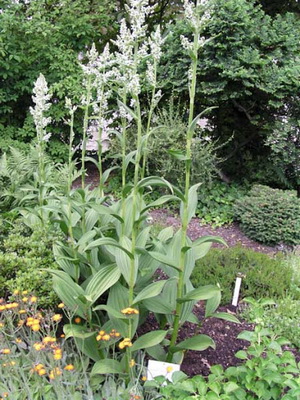
hellebore california
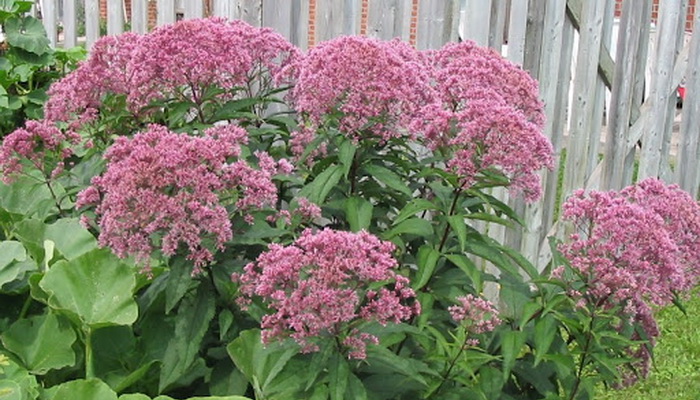
purple stethosis – have a height of more than 2 m.
The tall group includes plants with a height of 1 to 2 m:
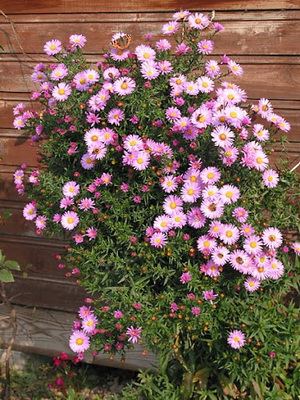
aster new english

basilists

autumn helenium

delphinium cultural
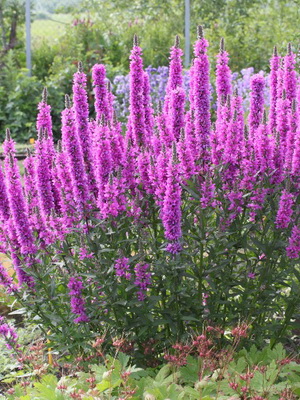
loosestrife
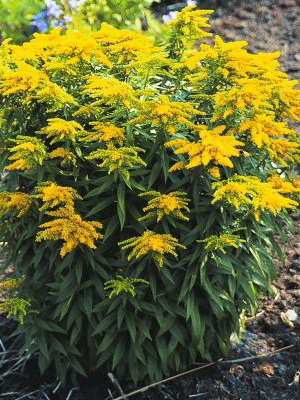
solidago hybrid
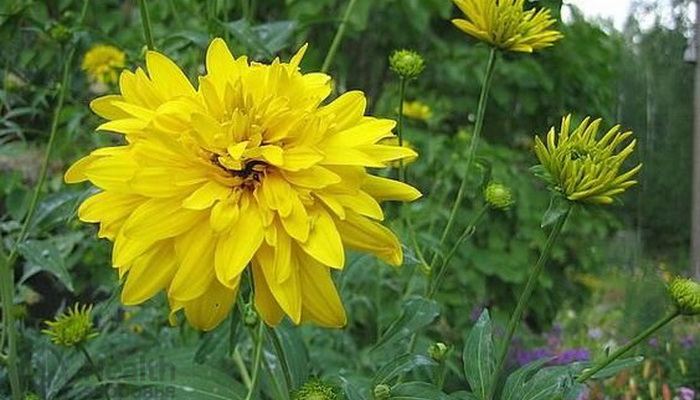
dissected rudbeckia, etc.
One of the most numerous groups is medium-sized plants with a height of 50 to 100 cm:
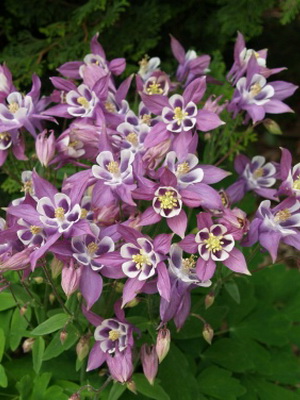
aquilegia hybrid
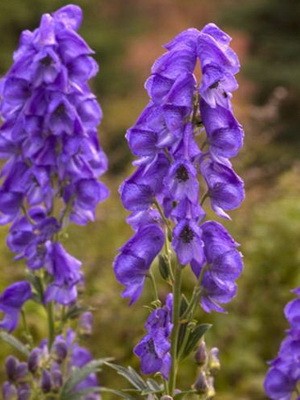
aconite nodule
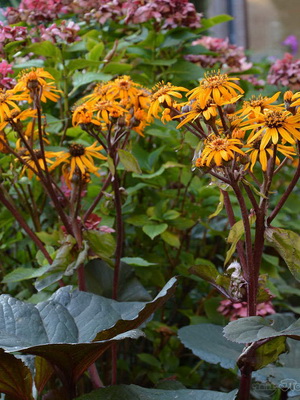
toothed buzulnik
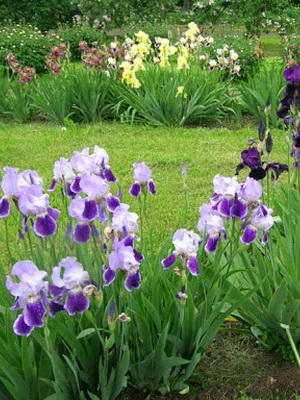
iris hybrid

bell peach

Coreopsis large-flowered
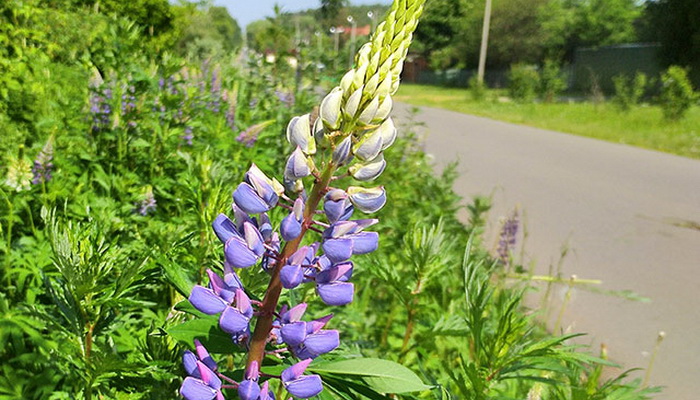
many-leaved lupine, etc.
The low group includes plant species with a height of 25 to 50 cm:

Thick-leafed bean
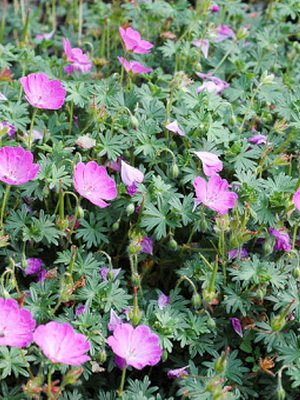
geranium blood red

bell carpathian
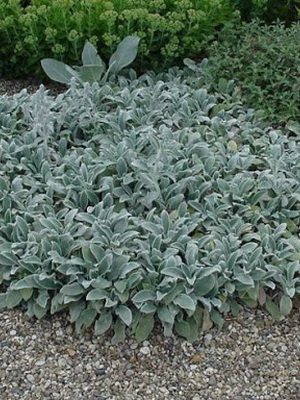
stachis woolly
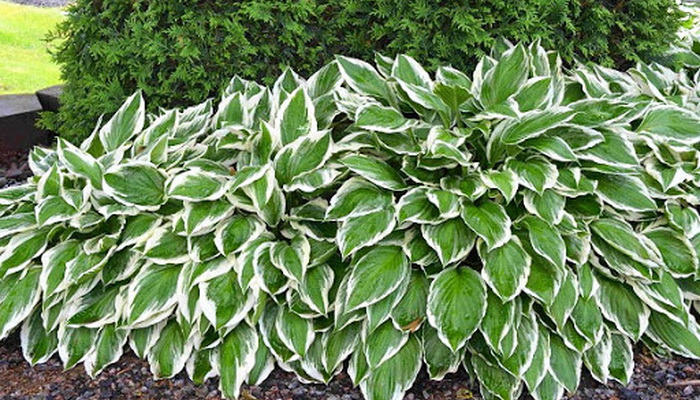
hosts
Plants with a height of no more than 25 cm are classified as dwarf (among them there are many so-called ground cover species):
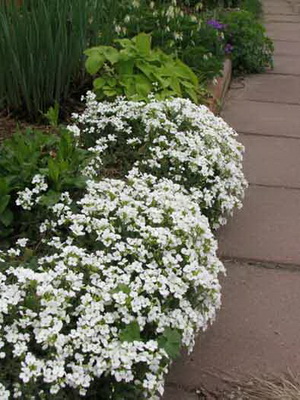
alpine arabis

periwinkle
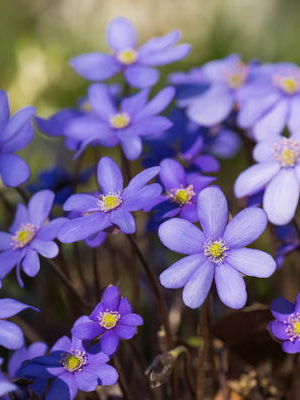
Liverwort
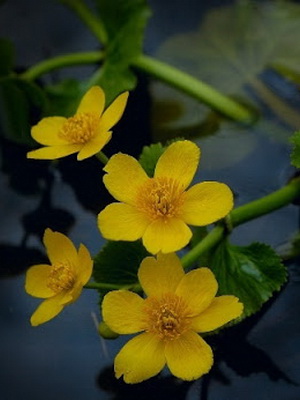
marsh marigold
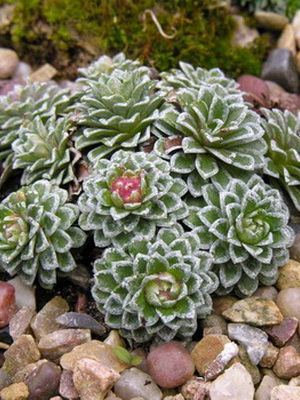
saxifrage
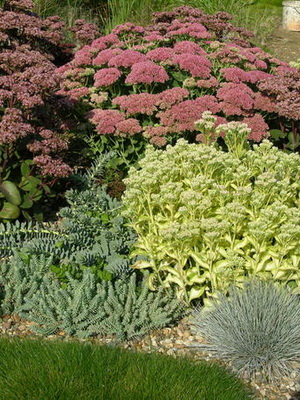
Cleaning
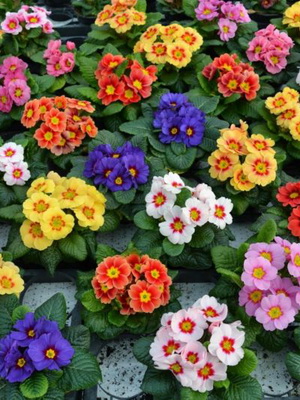
Primroses
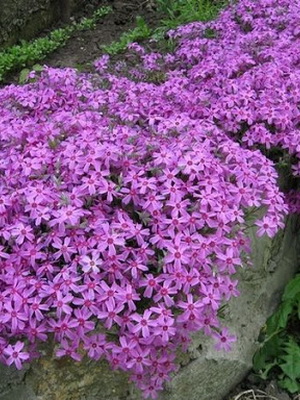
subulate phlox, etc.
Use in garden design
Picking up perennials in flower beds in height, it should be remembered that some species are “insidious” and have the ability to change height during the growing season. So, for example, plantain doronicum during flowering has a peduncle height of 80 to 100 cm, and after flowering it retains a bunch of leaves no more than 20 cm high. To a lesser extent, but also deceptively, the cultivated delphinium behaves. Powerful, chic inflorescences up to 120-150 cm high are replaced after flowering by basal leaves no more than 40-50 cm high.
Look at the photo of how beautiful the perennials used in the landscape design of garden plots are:
The flowering times of perennials are different, and therefore, from early spring to late autumn, you can provide an uninterrupted flower conveyor on your site. In April, the so-called primroses (crocuses, galanthuses, scillas, chionodoxes, muscari) will appear, they will be replaced by tulips, daffodils, hyacinths, primroses. Then there will come the time of brunner, phlox styloid and splayed, doronicum, peonies. In June-July, irises, phloxes, daylilies, delphinium reign, and in the fall you will be pleased with their flowering helenium, echinacea, solidago, dahlias, gladioli, asters.
The longevity of many perennial species, i.e. the possibility of their use in the design of a site in one place for a long time is one of the indisputable advantages of these plants. The champions in this category are peonies (there are cases when peonies grew in one place and bloomed annually for 40 years), as well as hosts, badan, Volzhanka. These crops can be grown without transplanting for 10 years or more. Consequently, there is no need to spend annually on planting material, which is important at current prices. But the main advantage is their unique individuality, a wide variety of forms of leaf blades, types of inflorescences, a large palette of colors.
As you can see in the photo, perennials in landscape design can be used for almost any type of flower decoration:
The disadvantages include some short flowering time: irises bloom for about two weeks, peonies – 15-20 days, most perennials flaunt for about 30-40 days, and these periods can be reduced with prolonged sunny and hot weather. In addition, there is a misconception that perennial flower beds do not need careful maintenance. However, only the correct agricultural technique, which includes the preparation of plants for overwintering, can provide maximum decorativeness and longevity to perennial flower crops.
The growth rate of perennials is one of the factors requiring special attention when using them in group plantings. If you plant the so-called bush plants (peonies, volzhanki, peach-leaved bell), incapable of rapid growth and conquest of territory, next to overgrown (creeping) plants, such as periwinkle, physicalostegia, monarda, tenacious, then after a few years it is “creepers” and will prevail in the flower garden.
Using perennials in garden design, it must be remembered that some of their species are quite “insidious”: the splendor of the leaves and abundant flowering are replaced in such crops by a sharp loss of decorativeness after flowering. An example is the oriental poppy, the dycenter is magnificent, the white lily – after flowering, these plants go to rest, leaving behind an empty space in the flower garden. Many perennials, already during flowering, lose their bush shape, fall apart (pink pyrethrum, tall Veronica, lupins, mountain cornflower), and to preserve their decorative effect, pruning of faded shoots is necessary to cause the growth of new basal leaves.
These photos show perennial plants for flower beds, the names of which are given above:
Peculiarities of growing
When growing perennial plants, it is necessary to take into account such features as the ratio of crops to light, moisture and soil fertility. Photophilous crops include gladioli, dahlias, asters, carnations, oriental poppy, sedums. With a lack of light in such crops, flowering weakens, the color of the flowers becomes faded, the bushes lose their compactness and fall apart, and some species stop blooming altogether. Among the light-loving plants, species that prefer open, sunny places in the morning and light shading in the afternoon should be distinguished. These are, first of all, paniculata phlox, milk-flowered peony, cultivated delphinium, buzulniki. The constant stay of such plants in an open place leads to a reduction in flowering time and partial fading of flowers and inflorescences.
Of great decorative value are species that can develop in the shade, with a significant lack of lighting. These are:

periwinkle

pinwheel
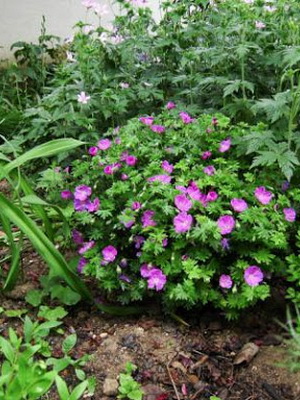
geranium blood red
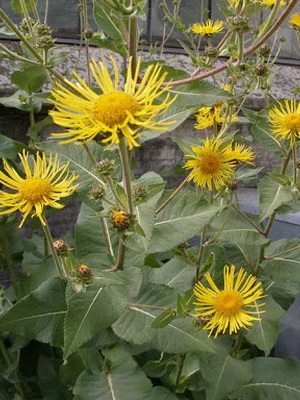
elecampane gorgeous

European clefthoof
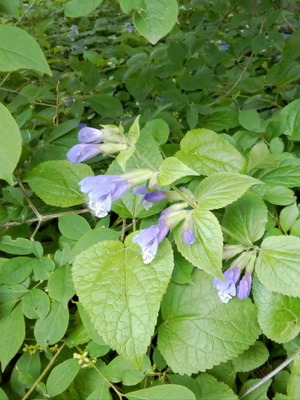
mikheniya nettle-leaved
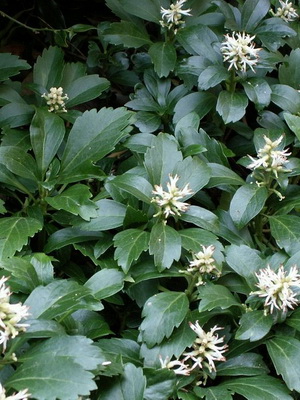
pachisandra apical
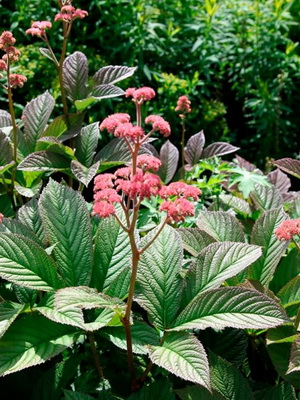
rogiersia
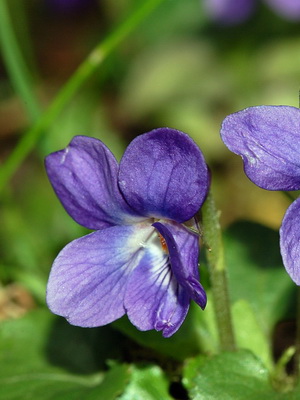
violet fragrant
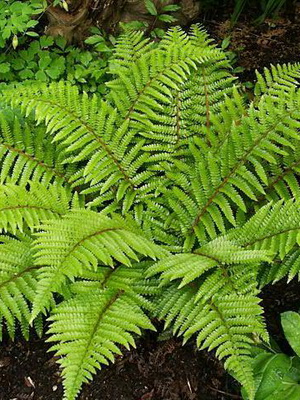
ferns
But plants that can develop both in an open sunny place and in conditions of partial shade are of particular value to the gardener. The only difference is that in the sun such species bloom earlier and fade faster, and vice versa in the shade. These include astilbe, hosts, primroses, aquilegia, multifoliate lupine, peach-leaved bell, Siberian iris, hybrid anemone.
The moisture and fertility of the soil are the determining conditions for the normal development of plants. Deep, moist soils are preferred by astilbe, wide butterbur, buzulniks, marsh iris, bathers, meadowsweet, primroses, paniculata phlox. With sufficient soil moisture, many shade-loving plants can thrive in open areas. With a lack of moisture in such plants, the height is significantly reduced, the overall development worsens, they bloom less.
The species that prefer dry soils include carnations, bright red gravilat, gypsophila, common meadowlily, daylilies, oriental poppy, wormwood, rudbeckia dissected-leaf, physostegia virginis, woolly chisel. Most species prefer soils with a moderate degree of moisture.
In relation to soil fertility, there are: plants that can grow on marginal soils (sedum, iris, poppy); plants that need moderately fertile soils (asters, aquilegia, gypsophila, delphinium, iris, chrysanthemum, lupine); plants that grow well only on highly fertile soils (astilbe, gladiolus, roses, peony, heuchera, paniculata phlox).
The soil for planting perennials must be prepared carefully and in advance. The depth of soil cultivation should be at least 35-50 cm (for self-rooted roses, at least 60 cm). In spring planting, the soil is dug up in autumn, in autumn – at least 1-1.5 months before planting.
In concluding this brief overview of perennial flower crops, it is necessary to note: better does not mean more. You should not strive to acquire as many plants as possible, so that later in the sun and in partial shade they can be shoved in disarray in different corners of the garden or knock around with a new pet all over the site in search of free space. A correctly selected group of several species of rather modest plants, combined with regard to their decorative and biological characteristics, is capable of making no less impression than a collection of lush, expensive novelties.
Perennials are no less decorative in combination with trees and shrubs. Flower arrays serve as a link between the vertical of tree and shrub groups and the horizontal surface of the lawn.
A separate group is made up of the so-called ground cover perennials, used mainly for the decoration of rockeries and stony areas. it
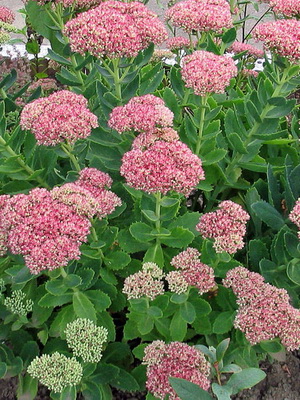
various sedums (stonecrops)
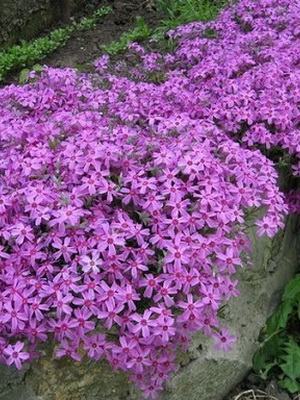
Phyllaceous
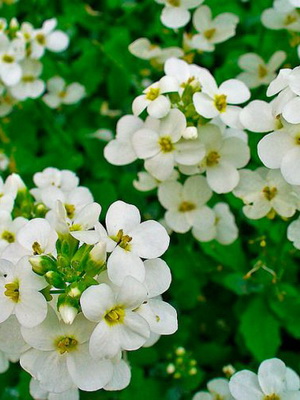
arabis

jerk
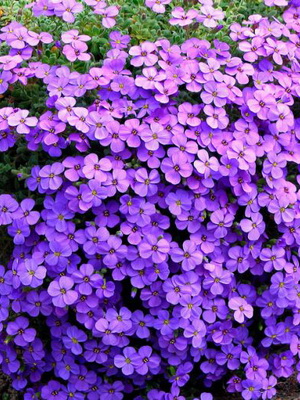
Aubrieta
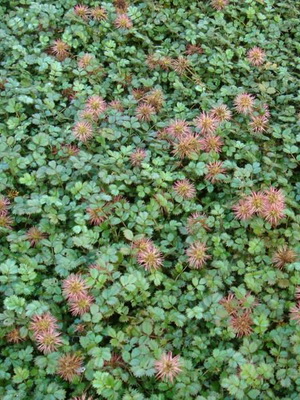
acenes
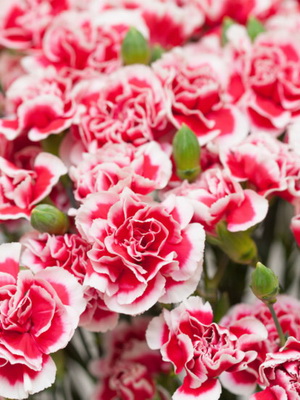
Clove
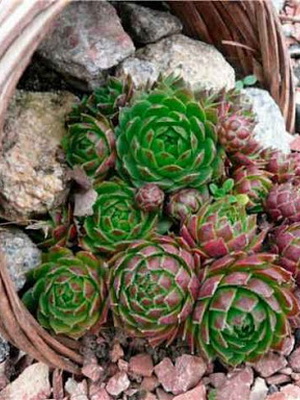
Young
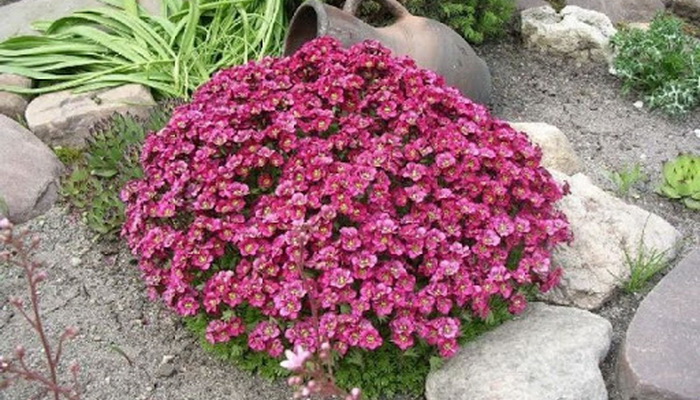
saxifrage, etc.
